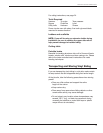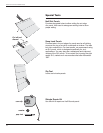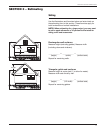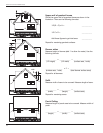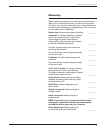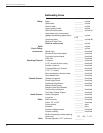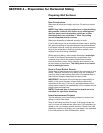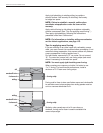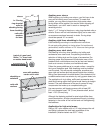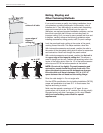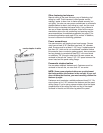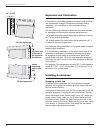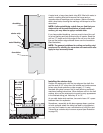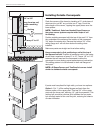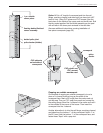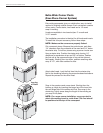
Applying over stucco
When applying vinyl siding over stucco, you first have to be
sure you’re working on an even surface. To create that
surface, you may have to knock down high spots where
furring strips will be applied. Use caution when chipping off
these spots – you don’t want to crack or damage the
remaining stucco.
Apply 1" x 3" furring to the stucco, using ring-shanked nails or
screws. Stucco will not hold fasteners tightly, so be sure nails
or screws are anchored securely to studs. Furring strips
should be spaced 16" on center.
Applying rigid foam sheathing to furring
Install sheathing according to manufacturer’s instructions.
Do not apply siding directly to furring strips. For best thermal
performance, install a minimum of 1/4" foam over furring strips.
Applying over steel studs
Pre-planning is the key when installing vinyl siding and
accessories over steel studs. Pre-planning includes the
selection of siding style and the types of accessories. Pre-
planning proper stud placement will eliminate many of the
problems that could surface once the job has been started,
such as at corners, windows, and transitional areas.
Follow the same guidelines as in a wood surface – except for
the type of fasteners used. Wall sheathing must be installed
over the studs. This will provide a straighter, smoother and
more rigid wall surface and help prevent studs from twisting.
Siding must be secured into metal studs if the substrate is not
a nailable surface such as exterior dry wall, gypsum board, etc.
The application of vinyl siding, soffits and accessories over
steel stud framing rather than typical wood framing is straight-
forward. The main difference is the use of screws to hang
components that make up a completed siding job.
Use noncorrosive, self-tapping screws with at least 3/8"
(9.5 mm) diameter head, 1/8" (3 mm) diameter shaft, and at
least 1-1/8" (29 mm) long.
Although the fastening method for steel studs differs from
wood construction, all other procedures still apply, including
fastening in the center of the nail slot and not overtightening
the fasteners.
Application for high wind areas
Using a 5/8" nylon washer with a 1/4" hole between the nail
and siding increases the wind load capabilities of the
installation. (Washer tested was 0.071" thick.)
stucco
1 x 3 furring
ring-shanked
nails for
attaching furring
foam sheathing
nails with
washers
for foam
16"
typical of a pan head,
“wafer,” “s” truss head
or washer head screw
sheathing or
substrate
nails with
washers
even with washers,
center nail in slots
23
Wolverine Fit and Finish Installation Guide



